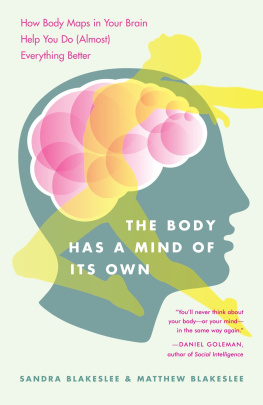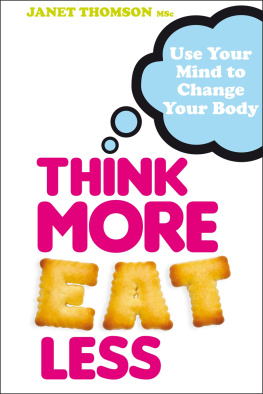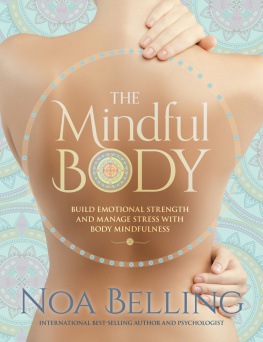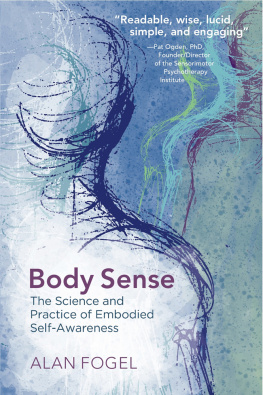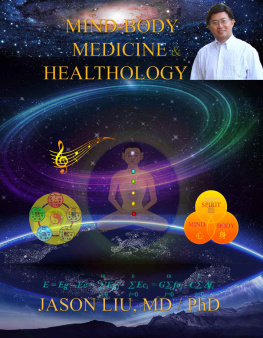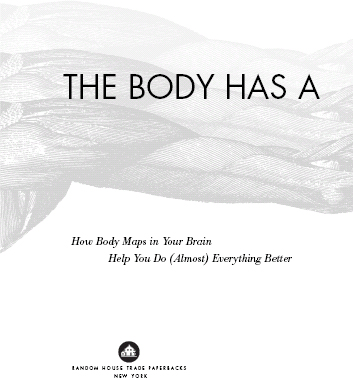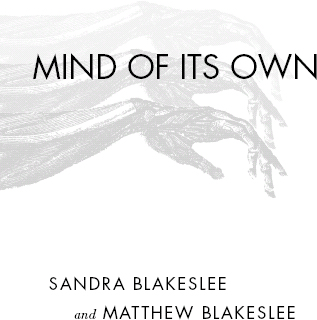Sandra Blakeslee - The Body Has a Mind of Its Own: How Body Maps in Your Brain Help You Do (Almost) Everything Better
Here you can read online Sandra Blakeslee - The Body Has a Mind of Its Own: How Body Maps in Your Brain Help You Do (Almost) Everything Better full text of the book (entire story) in english for free. Download pdf and epub, get meaning, cover and reviews about this ebook. year: 2007, publisher: Random House, genre: Religion. Description of the work, (preface) as well as reviews are available. Best literature library LitArk.com created for fans of good reading and offers a wide selection of genres:
Romance novel
Science fiction
Adventure
Detective
Science
History
Home and family
Prose
Art
Politics
Computer
Non-fiction
Religion
Business
Children
Humor
Choose a favorite category and find really read worthwhile books. Enjoy immersion in the world of imagination, feel the emotions of the characters or learn something new for yourself, make an fascinating discovery.
- Book:The Body Has a Mind of Its Own: How Body Maps in Your Brain Help You Do (Almost) Everything Better
- Author:
- Publisher:Random House
- Genre:
- Year:2007
- Rating:5 / 5
- Favourites:Add to favourites
- Your mark:
The Body Has a Mind of Its Own: How Body Maps in Your Brain Help You Do (Almost) Everything Better: summary, description and annotation
We offer to read an annotation, description, summary or preface (depends on what the author of the book "The Body Has a Mind of Its Own: How Body Maps in Your Brain Help You Do (Almost) Everything Better" wrote himself). If you haven't found the necessary information about the book — write in the comments, we will try to find it.
Just as road maps represent interconnections across the landscape, your many body maps represent all aspects of your bodily self, inside and out. In concert, they create your physical and emotional awareness and your sense of being a whole, feeling self in a larger social world.
Moreover, your body maps are profoundly elastic. Your self doesnt begin and end with your physical body but extends into the space around you. This space morphs every time you put on or take off clothes, ride a bike, or wield a tool. When you drive a car, your personal body space grows to envelop it. When you play a video game, your body maps automatically track and emulate the actions of your character onscreen. When you watch a scary movie, your body maps put dread in your stomach and send chills down your spine. If your body maps fall out of sync, you may have an out-of-body experience or see auras around other people.
The Body Has a Mind of Its Ownexplains how you can tap into the power of body maps to do almost anything betterwhether it is playing tennis, strumming a guitar, riding a horse, dancing a waltz, empathizing with a friend, raising children, or coping with stress.
The story of body maps goes even further, providing a fresh look at the causes of anorexia, bulimia, obsessive plastic surgery, and the notorious golfers curse the yips. It lends insights into culture, language, music,parenting, emotions, chronic pain, and more.
Filled with illustrations, wonderful anecdotes, and even parlor tricks that you can use to reconfigure your body sense,The Body Has a Mind of Its Ownwill change the way you thinkabout the way you think.
The Blakeslees have taken the latest and most exciting finds from brain research and have made them accessible. This is how science writing should always be.
Michael S. Gazzaniga, Ph.D., author ofThe Ethical Brain
Through a stream of fascinating and entertaining examples, Sandra Blakeslee and Matthew Blakeslee illustrate how our perception of ourselves, and indeed the world, is not fixed but is surprisingly fluid and easily modified. They have created the best book ever written about how our sense of self emerges from the motley collection of neurons we call the brain.
Jeff Hawkins, co-author ofOn Intelligence
The Blakeslees have taken the latest and most exciting finds from brain research and have made them accessible. This is how science writing should always be.
Michael S. Gazzaniga, Ph.D., author ofThe Ethical Brain
A marvelous book. In the last ten years there has been a paradigm shift in understanding the brain and how its various specialized regions respond to environmental challenges. In addition to providing a brilliant overview of recent revolutionary discoveries on body image and brain plasticity, the book is sprinkled with numerous insights.
V. S. Ramachandran, M.D., director, Center for Brain and Cognition, University of California, San Diego
Sandra Blakeslee: author's other books
Who wrote The Body Has a Mind of Its Own: How Body Maps in Your Brain Help You Do (Almost) Everything Better? Find out the surname, the name of the author of the book and a list of all author's works by series.

